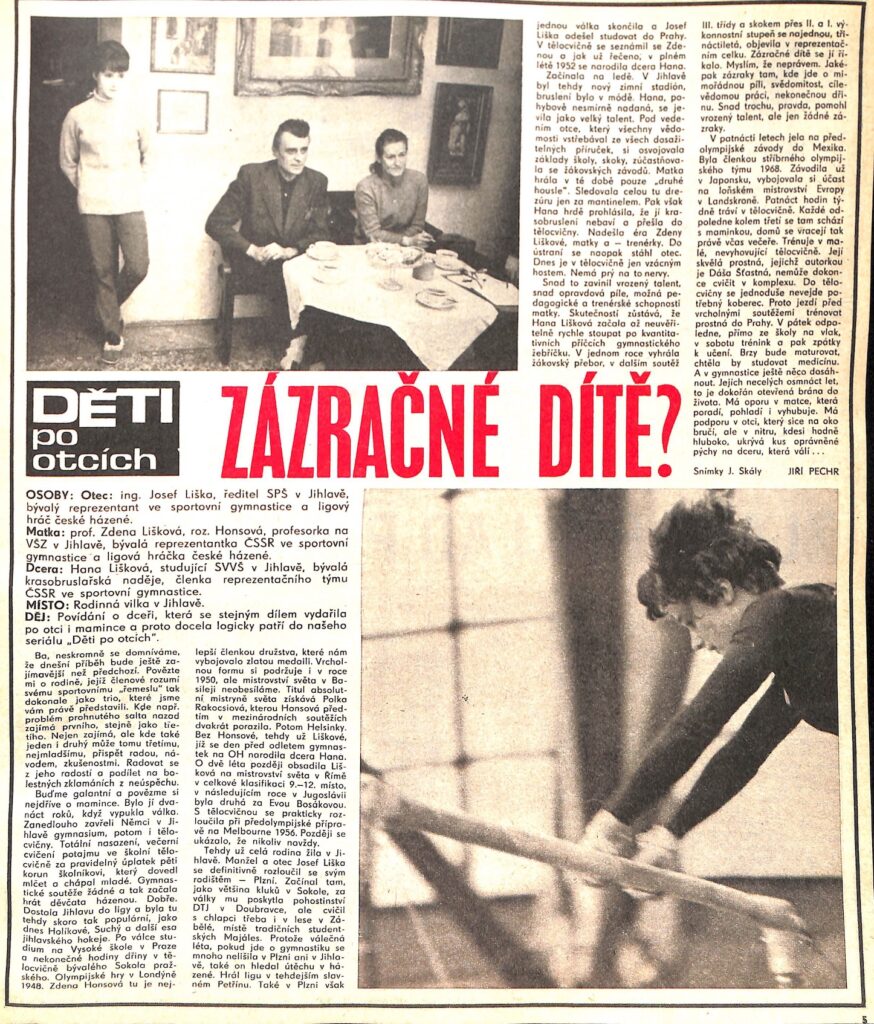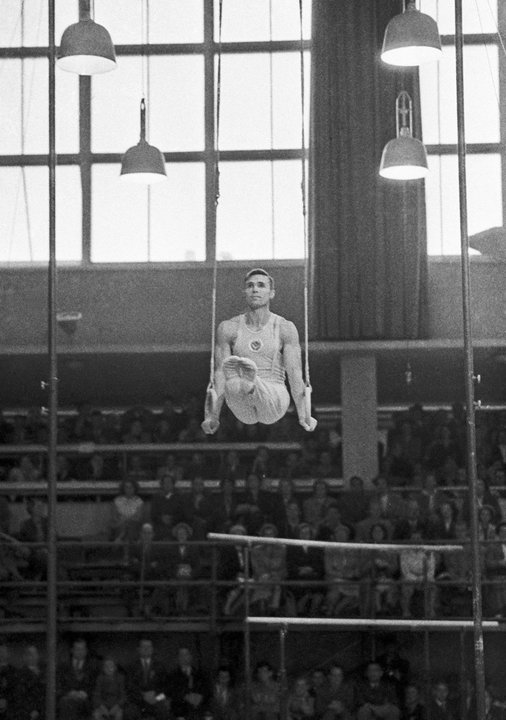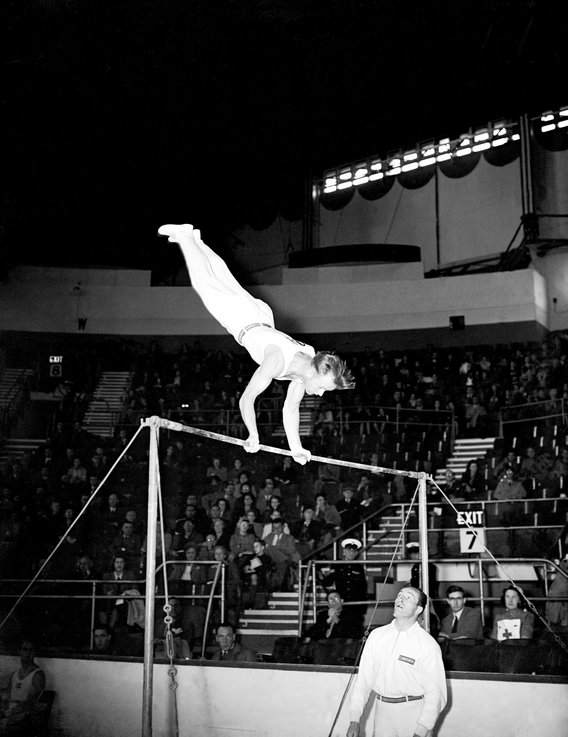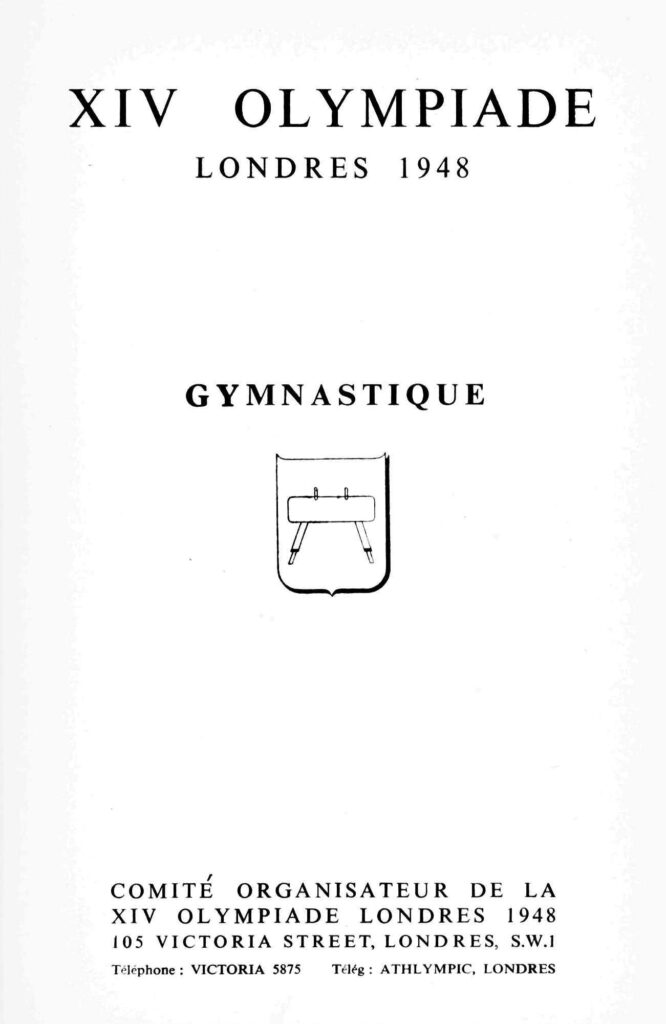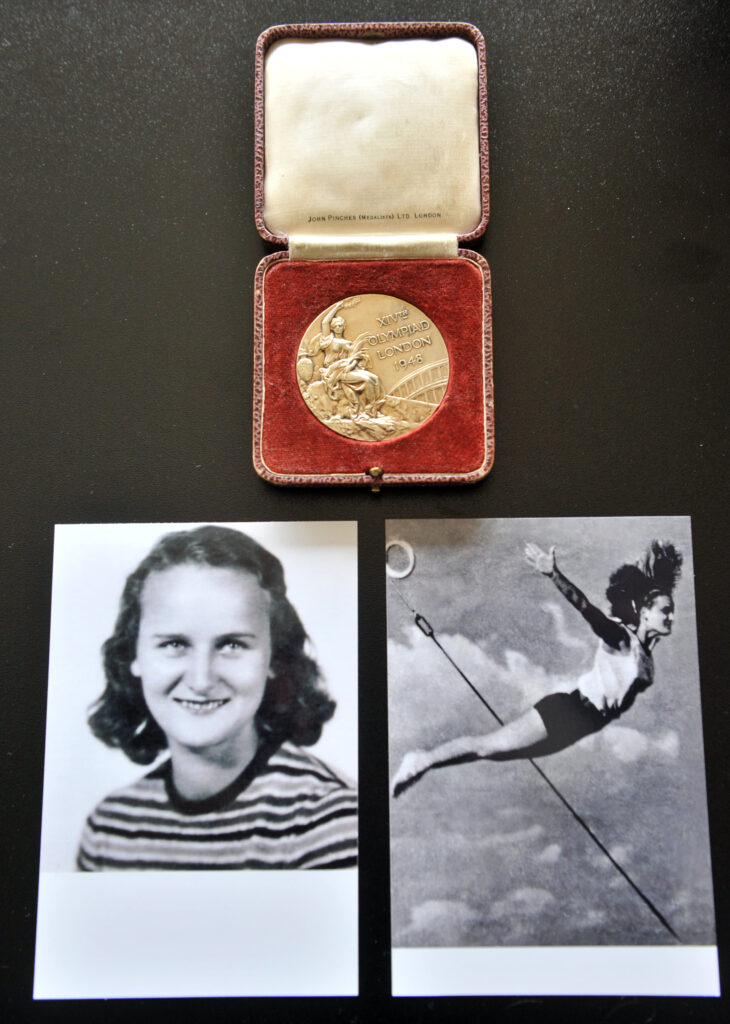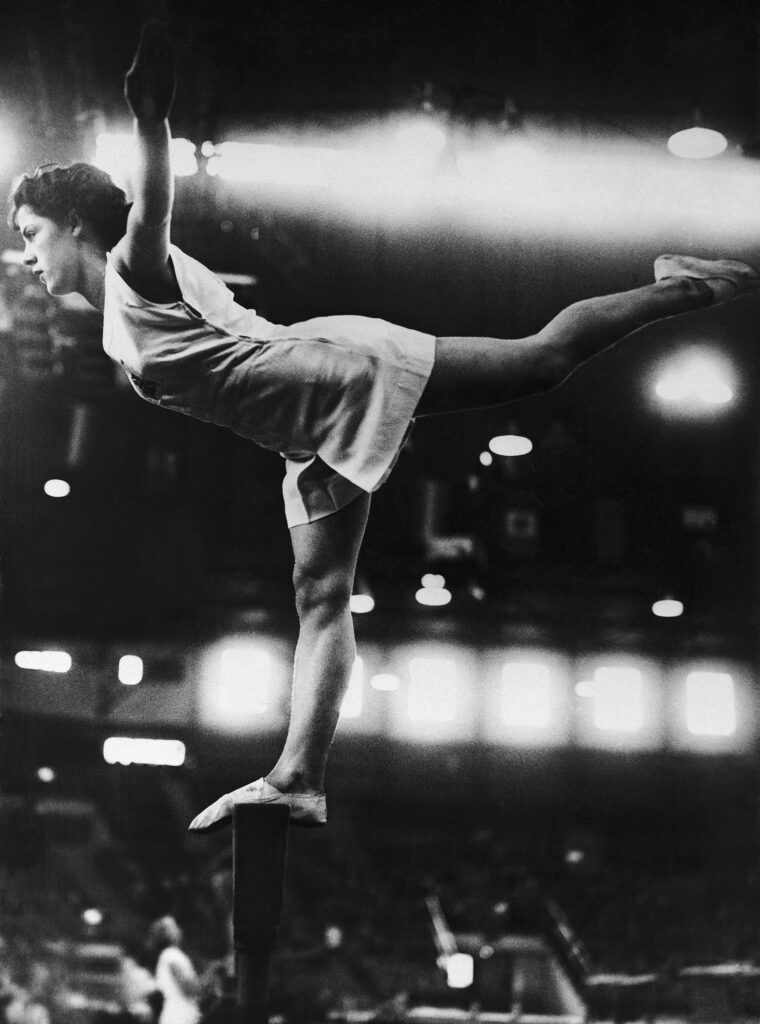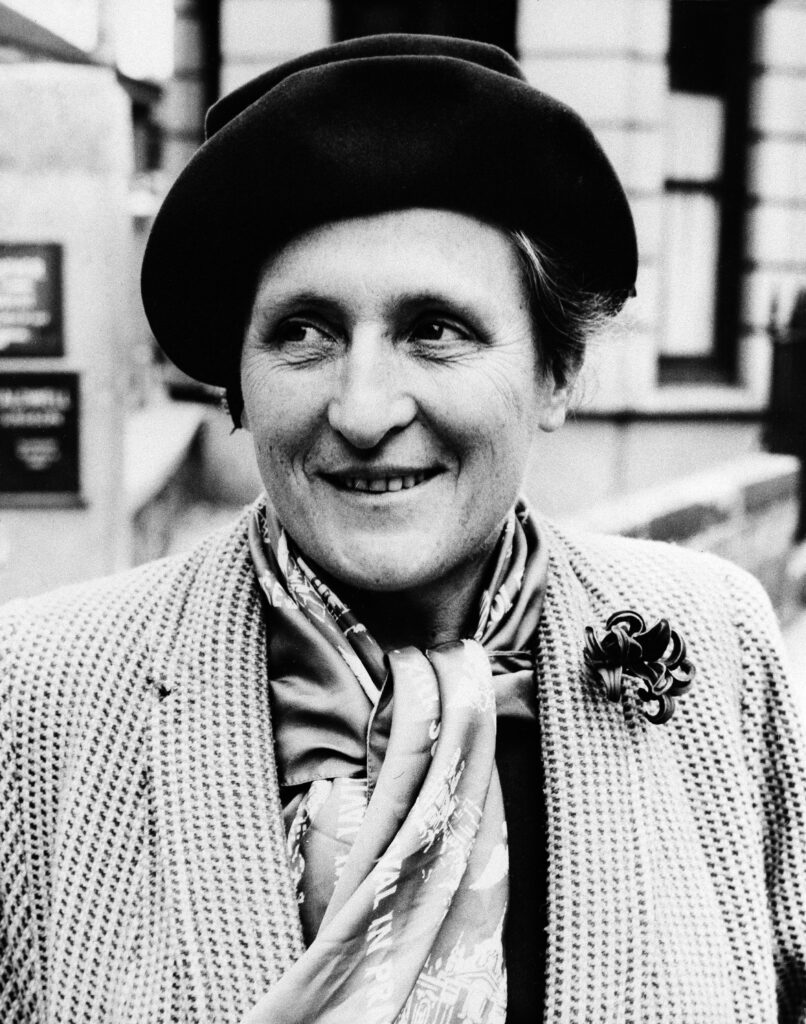Zdena Honsová was part of the Czechoslovak team that won gold at the 1948 Olympic Games. Had there been an all-around competition, Honsová would have won the gold medal in London. She was also part of the Czechoslovak team that took bronze at the 1954 Rome World Championships. (By then, she had married, and her surname was Lišková.)
Twenty years later, Honsová’s daughter, Hana Lišková, was part of the Czechoslovak team that won silver at the Mexico City Olympics and bronze at the Ljubljana World Championships. Her gym was so small that it could not fit a full-size floor exercise mat.
Here’s their story, as told by the Czechoslovak magazine Stadión.
